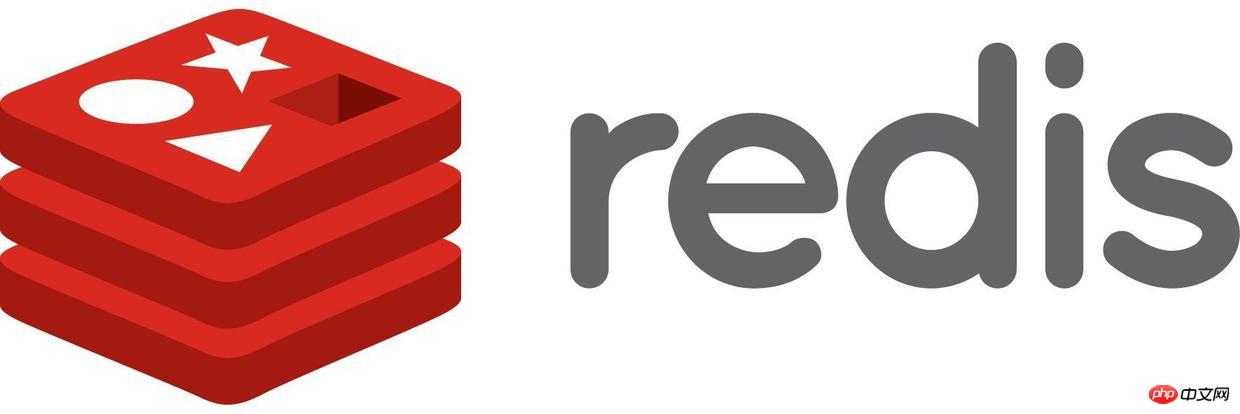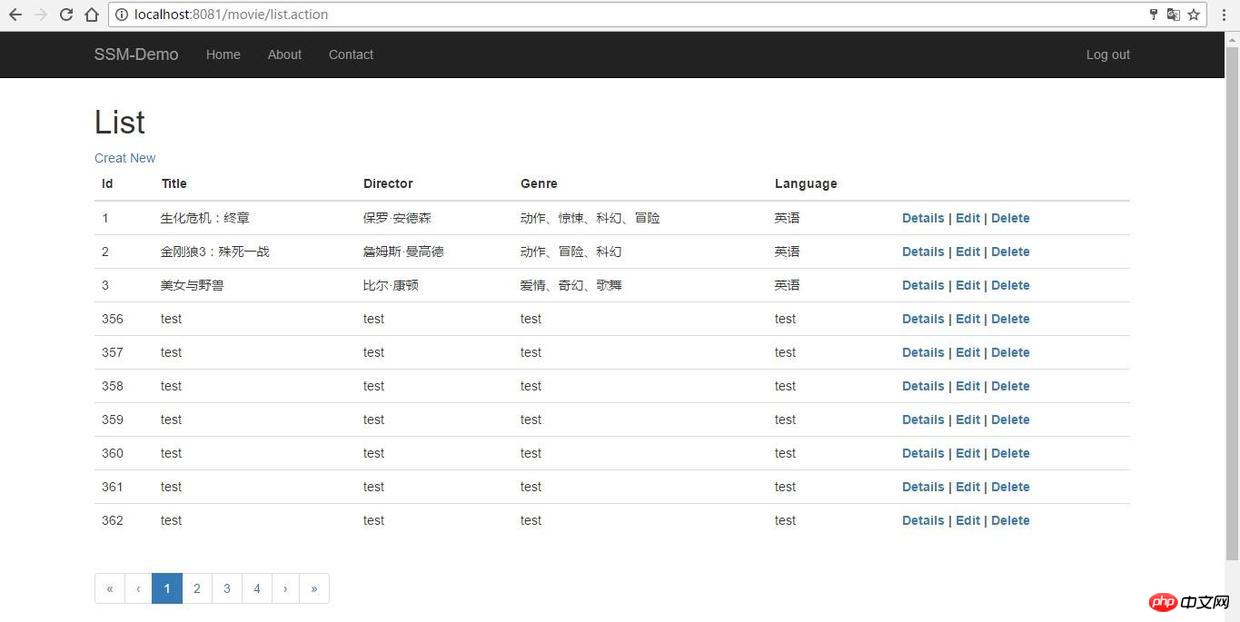Detailed explanation of SSM integration with Redis in Java

Redis installation and use
The first step is of course to install Redis. Here we take the installation on Windows as an example.
First download Redis, you can choose msi or zip package installation method
zip method needs to open the cmd window and run it in the decompressed directory
redis-server redis.windows.confStart RedisAfter installation in msi mode, Redis starts by default and does not require any configuration
You can modify the Redis port number, password and other configurations in the redis.windows.conf file. After the modification is completed, use the
redis-server redis.windows.confcommand to restartExecute in the Redis installation directory
redis-cli -h 127.0.0.1 -p 6379 -a PasswordOpen the Redis operation interface-
If an error
(error) ERR operation not permittedis reported, useauth passwordfor verification
SSM integrates Redis
Redis integration is carried out directly based on the framework integration of SSM in the previous article. It should be noted here that the pojo class stored in Redis must implement Serializableinterface .
Configure pom.xml to introduce Redis dependencies
<!--redis--><dependency>
<groupId>org.springframework.data</groupId>
<artifactId>spring-data-redis</artifactId>
<version>1.6.1.RELEASE</version></dependency><dependency>
<groupId>redis.clients</groupId>
<artifactId>jedis</artifactId>
<version>2.7.3</version></dependency>redis.properties
redis.host=127.0.0.1 redis.port=6379 redis.password=redis redis.maxIdle=100 redis.maxWait=1000 redis.testOnBorrow=true redis.timeout=100000 defaultCacheExpireTime=3600
applicationContext-redis.xml
<?xml version="1.0" encoding="UTF-8"?><beans xmlns="http://www.springframework.org/schema/beans"
xmlns:xsi="http://www.w3.org/2001/XMLSchema-instance"
xmlns:mvc="http://www.springframework.org/schema/mvc"
xmlns:context="http://www.springframework.org/schema/context"
xmlns:aop="http://www.springframework.org/schema/aop"
xmlns:tx="http://www.springframework.org/schema/tx"
xsi:schemaLocation="http://www.springframework.org/schema/beans
http://www.springframework.org/schema/beans/spring-beans.xsd
http://www.springframework.org/schema/mvc
http://www.springframework.org/schema/mvc/spring-mvc.xsd
http://www.springframework.org/schema/context
http://www.springframework.org/schema/context/spring-context.xsd
http://www.springframework.org/schema/aop
http://www.springframework.org/schema/aop/spring-aop.xsd
http://www.springframework.org/schema/tx
http://www.springframework.org/schema/tx/spring-tx.xsd">
<!--引入Redis配置文件-->
<bean id="propertyConfigurer" class="org.springframework.beans.factory.config.PropertyPlaceholderConfigurer">
<property name="locations">
<list>
<value>classpath:redis.properties</value>
</list>
</property>
</bean>
<!-- jedis 连接池配置 -->
<bean id="poolConfig" class="redis.clients.jedis.JedisPoolConfig">
<property name="maxIdle" value="${redis.maxIdle}"/>
<property name="maxWaitMillis" value="${redis.maxWait}"/>
<property name="testOnBorrow" value="${redis.testOnBorrow}"/>
</bean>
<!-- redis连接工厂 -->
<bean id="connectionFactory" class="org.springframework.data.redis.connection.jedis.JedisConnectionFactory">
<property name="poolConfig" ref="poolConfig"/>
<property name="port" value="${redis.port}"/>
<property name="hostName" value="${redis.host}"/>
<property name="password" value="${redis.password}"/>
<property name="timeout" value="${redis.timeout}"></property>
</bean>
<bean id="redisTemplate" class="org.springframework.data.redis.core.RedisTemplate">
<property name="connectionFactory" ref="connectionFactory"/>
<property name="keySerializer">
<bean class="org.springframework.data.redis.serializer.StringRedisSerializer"/>
</property>
<property name="valueSerializer">
<bean class="org.springframework.data.redis.serializer.JdkSerializationRedisSerializer"/>
</property>
</bean>
<!-- 缓存拦截器配置 -->
<bean id="methodCacheInterceptor" class="com.zkh.interceptor.MethodCacheInterceptor">
<property name="redisUtil" ref="redisUtil"/>
<property name="defaultCacheExpireTime" value="${defaultCacheExpireTime}"/>
<!-- 禁用缓存的类名列表 -->
<property name="targetNamesList">
<list>
<value></value>
</list>
</property>
<!-- 禁用缓存的方法名列表 -->
<property name="methodNamesList">
<list>
<value></value>
</list>
</property>
</bean>
<bean id="redisUtil" class="com.zkh.util.RedisUtil">
<property name="redisTemplate" ref="redisTemplate"/>
</bean>
<!--配置切面拦截方法 -->
<aop:config proxy-target-class="true">
<aop:pointcut id="controllerMethodPointcut" expression="
execution(* com.zkh.service.impl.*.select*(..))"/>
<aop:advisor advice-ref="methodCacheInterceptor" pointcut-ref="controllerMethodPointcut"/>
</aop:config></beans>MethodCacheInterceptor.java
package com.zkh.interceptor;
import com.zkh.util.RedisUtil;
import org.aopalliance.intercept.MethodInterceptor;
import org.aopalliance.intercept.MethodInvocation;
import java.util.List;
/**
* Redis缓存过滤器
*/
public class MethodCacheInterceptor implements MethodInterceptor {
private RedisUtil redisUtil;
private List<String> targetNamesList; // 禁用缓存的类名列表
private List<String> methodNamesList; // 禁用缓存的方法列表
private String defaultCacheExpireTime; // 缓存默认的过期时间
@Override
public Object invoke(MethodInvocation invocation) throws Throwable {
Object value = null;
String targetName = invocation.getThis().getClass().getName();
String methodName = invocation.getMethod().getName();
if (!isAddCache(targetName, methodName)) {
// 跳过缓存返回结果
return invocation.proceed();
}
Object[] arguments = invocation.getArguments();
String key = getCacheKey(targetName, methodName, arguments);
try { // 判断是否有缓存
if (redisUtil.exists(key)) {
return redisUtil.get(key);
} // 写入缓存
value = invocation.proceed();
if (value != null) {
final String tkey = key;
final Object tvalue = value;
new Thread(new Runnable() {
@Override
public void run() {
redisUtil.set(tkey, tvalue, Long.parseLong(defaultCacheExpireTime));
}
}).start();
}
} catch (Exception e) {
e.printStackTrace();
if (value == null) {
return invocation.proceed();
}
} return value;
}
/**
* 是否加入缓存
*
* @return
*/
private boolean isAddCache(String targetName, String methodName) {
boolean flag = true;
if (targetNamesList.contains(targetName)
|| methodNamesList.contains(methodName) || targetName.contains("$$EnhancerBySpringCGLIB$$")) {
flag = false;
} return flag;
}
/**
* 创建缓存key
*
* @param targetName
* @param methodName
* @param arguments
*/
private String getCacheKey(String targetName, String methodName,
Object[] arguments) {
StringBuffer sbu = new StringBuffer();
sbu.append(targetName).append("_").append(methodName);
if ((arguments != null) && (arguments.length != 0)) {
for (int i = 0; i < arguments.length; i++) {
sbu.append("_").append(arguments[i]);
}
} return sbu.toString();
} public void setRedisUtil(RedisUtil redisUtil) {
this.redisUtil = redisUtil;
} public void setTargetNamesList(List<String> targetNamesList) {
this.targetNamesList = targetNamesList;
} public void setMethodNamesList(List<String> methodNamesList) {
this.methodNamesList = methodNamesList;
} public void setDefaultCacheExpireTime(String defaultCacheExpireTime) {
this.defaultCacheExpireTime = defaultCacheExpireTime;
}
}RedisUtil.java tool class
package com.zkh.util;import org.apache.log4j.Logger;import org.springframework.data.redis.core.RedisTemplate;import org.springframework.data.redis.core.ValueOperations;import java.io.Serializable;import java.util.Set;import java.util.concurrent.TimeUnit;/** * Redis工具类 */public class RedisUtil { private RedisTemplate<Serializable, Object> redisTemplate; /** * 批量删除对应的value * * @param keys */
public void remove(final String... keys) { for (String key : keys) { remove(key);
}
} /** * 批量删除key * * @param pattern */
public void removePattern(final String pattern) {
Set<Serializable> keys = redisTemplate.keys(pattern); if (keys.size() > 0)
redisTemplate.delete(keys);
} /** * 删除对应的value * * @param key */
public void remove(final String key) { if (exists(key)) {
redisTemplate.delete(key);
}
} /** * 判断缓存中是否有对应的value * * @param key * @return */
public boolean exists(final String key) { return redisTemplate.hasKey(key);
} /** * 读取缓存 * * @param key * @return */
public Object get(final String key) {
Object result = null;
ValueOperations<Serializable, Object> operations = redisTemplate
.opsForValue();
result = operations.get(key); return result;
} /** * 写入缓存 * * @param key * @param value * @return */
public boolean set(final String key, Object value) { boolean result = false; try {
ValueOperations<Serializable, Object> operations = redisTemplate
.opsForValue();
operations.set(key, value);
result = true;
} catch (Exception e) {
e.printStackTrace();
} return result;
} /** * 写入缓存 * * @param key * @param value * @return */
public boolean set(final String key, Object value, Long expireTime) { boolean result = false; try {
ValueOperations<Serializable, Object> operations = redisTemplate
.opsForValue();
operations.set(key, value);
redisTemplate.expire(key, expireTime, TimeUnit.SECONDS);
result = true;
} catch (Exception e) {
e.printStackTrace();
} return result;
} public void setRedisTemplate(
RedisTemplate<Serializable, Object> redisTemplate) { this.redisTemplate = redisTemplate;
}
}##Effect display




F5 to refresh the page. You can see from the Tomcat console that there is no progress. SQL query, but reads cached data directly from Redis, reducing the burden on the database


The above is the detailed content of Detailed explanation of SSM integration with Redis in Java. For more information, please follow other related articles on the PHP Chinese website!

Hot AI Tools

Undresser.AI Undress
AI-powered app for creating realistic nude photos

AI Clothes Remover
Online AI tool for removing clothes from photos.

Undress AI Tool
Undress images for free

Clothoff.io
AI clothes remover

Video Face Swap
Swap faces in any video effortlessly with our completely free AI face swap tool!

Hot Article

Hot Tools

Notepad++7.3.1
Easy-to-use and free code editor

SublimeText3 Chinese version
Chinese version, very easy to use

Zend Studio 13.0.1
Powerful PHP integrated development environment

Dreamweaver CS6
Visual web development tools

SublimeText3 Mac version
God-level code editing software (SublimeText3)

Hot Topics
 How to build the redis cluster mode
Apr 10, 2025 pm 10:15 PM
How to build the redis cluster mode
Apr 10, 2025 pm 10:15 PM
Redis cluster mode deploys Redis instances to multiple servers through sharding, improving scalability and availability. The construction steps are as follows: Create odd Redis instances with different ports; Create 3 sentinel instances, monitor Redis instances and failover; configure sentinel configuration files, add monitoring Redis instance information and failover settings; configure Redis instance configuration files, enable cluster mode and specify the cluster information file path; create nodes.conf file, containing information of each Redis instance; start the cluster, execute the create command to create a cluster and specify the number of replicas; log in to the cluster to execute the CLUSTER INFO command to verify the cluster status; make
 PHP vs. Python: Understanding the Differences
Apr 11, 2025 am 12:15 AM
PHP vs. Python: Understanding the Differences
Apr 11, 2025 am 12:15 AM
PHP and Python each have their own advantages, and the choice should be based on project requirements. 1.PHP is suitable for web development, with simple syntax and high execution efficiency. 2. Python is suitable for data science and machine learning, with concise syntax and rich libraries.
 PHP: A Key Language for Web Development
Apr 13, 2025 am 12:08 AM
PHP: A Key Language for Web Development
Apr 13, 2025 am 12:08 AM
PHP is a scripting language widely used on the server side, especially suitable for web development. 1.PHP can embed HTML, process HTTP requests and responses, and supports a variety of databases. 2.PHP is used to generate dynamic web content, process form data, access databases, etc., with strong community support and open source resources. 3. PHP is an interpreted language, and the execution process includes lexical analysis, grammatical analysis, compilation and execution. 4.PHP can be combined with MySQL for advanced applications such as user registration systems. 5. When debugging PHP, you can use functions such as error_reporting() and var_dump(). 6. Optimize PHP code to use caching mechanisms, optimize database queries and use built-in functions. 7
 How to clear redis data
Apr 10, 2025 pm 10:06 PM
How to clear redis data
Apr 10, 2025 pm 10:06 PM
How to clear Redis data: Use the FLUSHALL command to clear all key values. Use the FLUSHDB command to clear the key value of the currently selected database. Use SELECT to switch databases, and then use FLUSHDB to clear multiple databases. Use the DEL command to delete a specific key. Use the redis-cli tool to clear the data.
 PHP vs. Other Languages: A Comparison
Apr 13, 2025 am 12:19 AM
PHP vs. Other Languages: A Comparison
Apr 13, 2025 am 12:19 AM
PHP is suitable for web development, especially in rapid development and processing dynamic content, but is not good at data science and enterprise-level applications. Compared with Python, PHP has more advantages in web development, but is not as good as Python in the field of data science; compared with Java, PHP performs worse in enterprise-level applications, but is more flexible in web development; compared with JavaScript, PHP is more concise in back-end development, but is not as good as JavaScript in front-end development.
 How to read redis queue
Apr 10, 2025 pm 10:12 PM
How to read redis queue
Apr 10, 2025 pm 10:12 PM
To read a queue from Redis, you need to get the queue name, read the elements using the LPOP command, and process the empty queue. The specific steps are as follows: Get the queue name: name it with the prefix of "queue:" such as "queue:my-queue". Use the LPOP command: Eject the element from the head of the queue and return its value, such as LPOP queue:my-queue. Processing empty queues: If the queue is empty, LPOP returns nil, and you can check whether the queue exists before reading the element.
 PHP vs. Python: Core Features and Functionality
Apr 13, 2025 am 12:16 AM
PHP vs. Python: Core Features and Functionality
Apr 13, 2025 am 12:16 AM
PHP and Python each have their own advantages and are suitable for different scenarios. 1.PHP is suitable for web development and provides built-in web servers and rich function libraries. 2. Python is suitable for data science and machine learning, with concise syntax and a powerful standard library. When choosing, it should be decided based on project requirements.
 PHP: The Foundation of Many Websites
Apr 13, 2025 am 12:07 AM
PHP: The Foundation of Many Websites
Apr 13, 2025 am 12:07 AM
The reasons why PHP is the preferred technology stack for many websites include its ease of use, strong community support, and widespread use. 1) Easy to learn and use, suitable for beginners. 2) Have a huge developer community and rich resources. 3) Widely used in WordPress, Drupal and other platforms. 4) Integrate tightly with web servers to simplify development deployment.






